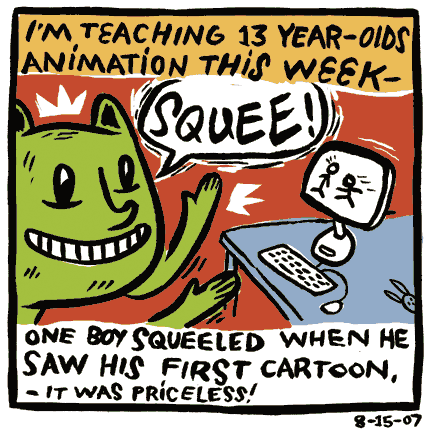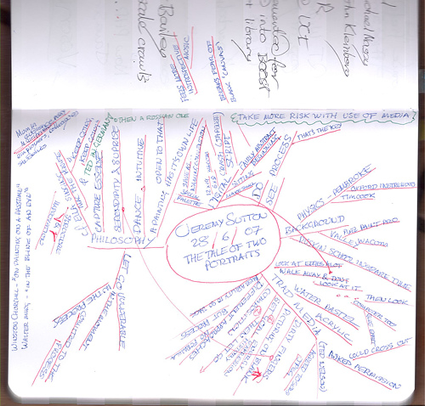I interrupt this Labor Day holiday weekend with something totally frivolous. It’s the first day of the month, and in honor of Kevin Hillstrom’s One Positive Day concept I’d like to praise a group of people, instead of a single business or individual. Today, in this warm and sunny Midwestern Saturday, I’d like to tip a glass of something cold in the direction of the millions of people who’ve made the Internet richer by sharing their lives and their talents with the world.
I write a professional blog, for purely professional reasons. I love it. I hope that comes through and takes some of the starch out of these posts. But there is always a level of propriety. The web may be freewheeling, but at least within these virtual office walls, I’ve placed limits on the topics covered and how they are discussed.
Blogging For The Fun of It
Most of the tens of millions of active bloggers have quite different standards and approaches. To my surprise, many are friends. I did a mental count yesterday, and realized that four of these friends who “blog for fun” were friends before they started blogging. (Full disclosure: One of them is more than just a friend. Hi, Julie. I’ll be home shortly — promise!)
And here, I’ve defined a friend in less the Friendster definition of a close connection on a profile, and more as a “real world” friend. In other words, I’ve shot the breeze with all of them, without a business connection or prior blogging relationship. Here are their blogs, listed from most recently founded to most established:
- My Life As A Bunny As I write this in a coffee shop, Max Estes is sitting at the neighboring table. His newly-launched daily blog (Wow! I can’t believe he’s so prolific!) is an absolute treat (example shown above). You may notice his style. He gave me permission to use a piece of his artwork to adorn the home page of this blog. I pray he wasn’t drawing me, but I’m too chicken to ask.
- Marty Feldmanize Me I’ve had the pleasure of knowing Augie for years. We first bonded over geek stuff, and the store for pet lovers he operates with his wife. And yes, we’re also professional colleagues. But I hope we’re friends first. Lately, his blog has shown me a new side to this complicated individual. Similar to the original Sienfeld show, I’d define this as a blog about nothing. I’ve enjoyed taking a break with it quite a bit.
- Bad Ass Birds The only blog in this list with a mildly vulgar title is also coincidentally the only one I would give a solid “G” rating, in terms of content and profanity. It amazes me how a mixture of made-up birds, odd reviews of even odder films, and semi-serious summaries of 1970s Dark Shadows TV episodes could add up to something so compelling. Man! As I look around, these bloggers are making me feel so boring!
- The Song In My Head Today This blog is lovingly written by a talented and passionate music reviewer (who also has excellent musical taste, in my humble opinion — she and I agree so often on her selections!). You’ll be challenged and entertained by Holly’s reviews. And God bless anyone who has on her blog an Elvis Costello Week!
Could you think of a better time than now, during this sultry long weekend, to amble through some new and perfectly frivolous blogs? Go for it. Subscribe to the ones you like, and be sure to comment on them as you see fit. (Comments keep us bloggers from feeling like we’re wasting our breath!)
And if any of your friends come to you and say, “I’m thinking of starting a blog,” tell them you know someone who has seen several of his friends — mostly non-tech types –Â take the plunge and revel in the world they found on the other side. Give your friend plenty of encouragement and watch what happens. It’s a blast for all involved.

